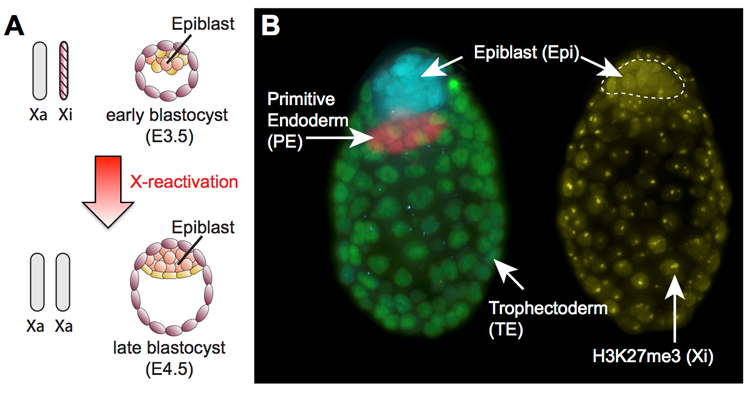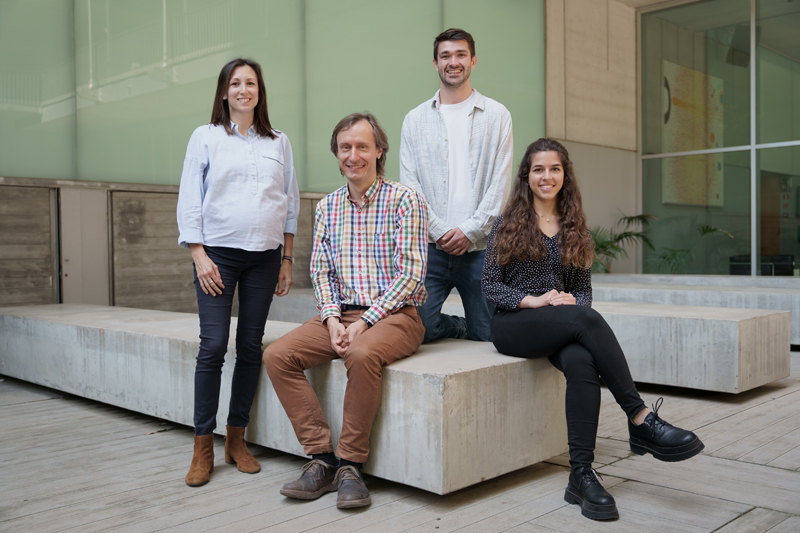 Payer Lab
Payer Lab
 Genome Biology
Genome Biology
- Group page
- Research lines
- Group members
- Publications
October 2017 AXA professor of Risk prediction in age-related diseases
October 2014 Group Leader, Centre for Genomic Regulation (CRG), Barcelona Spain
2006-2014 Postdoctoral work in laboratory of Jeannie Lee at Massachusetts General Hospital / Harvard Medical School, Boston, USA
2001-2006 Ph.D. in Developmental Biology in laboratory of Azim Surani at the Gurdon Institute, University of Cambridge, UK
2000-2001 M.Phil. in Developmental Biology, University of Cambridge, UK
1994-2000 Diploma in Biology/Genetics, University of Vienna, Austria
News
Viral defence protein speeds up female stem cell production (07/08/2024)
Researchers at the Centre for Genomic Regulation (CRG) have discovered a treatment which accelerates the production and quality of pluripotent stem cells in mice.
Turning X chromosome “off and on again” critical for oocyte development (23/05/2022)
Researchers at the Centre for Genomic Regulation (CRG) in Barcelona have identified a potential new diagnostic marker that predicts the successful and efficient development of mammalian egg cells.
Ageing impairs critical final egg maturation stage (28/04/2021)
Mature eggs provide critical material early embryos need to develop and survive
CRG and Eugin sign a collaboration agreement on molecular research applied to assisted reproduction (14/03/2018)
The project entails creation of four working groups (Vernos, Boke, Payer, Gabaldón) that will focus their research on gaining insights into the aging of ovules, their sensitivity to the passage of time, and studying whether changes in vaginal microbiota have an impact on assisted reproduction
Summary
While most cells of the body share the same genetic material, the cell type-specific interpretation of that information is largely dependent on epigenetic mechanisms. These include DNA-methylation and a variety of different histone modifications, which are heritable between cell divisions in order to maintain cellular identity. During early embryonic and germ cell development, epigenetic marks are reprogrammed on a global level to reset the epigenome to a ground state, which is characteristic for pluripotent stem cells and for cells of the germ cell lineage.
In female mammals the inactive X-chromosome is a classical example of epigenetic gene regulation, whereby gene expression from one of two X-chromosomes is repressed, in order to achieve the same X-linked gene dosage with males, which only have one single X-chromosome. This X-chromosome inactivation process includes multiple epigenetic mechanisms and is reversed in mice by X-chromosome reactivation in the epiblast (Figure 1) and in primordial germ cells.
Our laboratory is interested in elucidating the mechanisms of the X-chromosome reactivation process, which is also a characteristic feature of pluripotent stem cells in vitro. Using a multidisciplinary approach, we study epigenetic reprogramming of the X-chromosome in mouse embryos, during induced pluripotent stem cell (iPSC) reprogramming and during formation of the germ cell lineage. Thereby we want to gain further insight in how X-reactivation is linked to its biological context and how the erasure of epigenetic modifications and gene reactivation is accomplished. Our research is targeted at better understanding of the epigenetic state of pluripotent stem cells and germ cells, which will have implications on regenerative and reproductive medicine.

Figure 1: X-chromosome reactivation in mouse blastocysts. (A) Between embryonic day (E)3.5 and E4.5, the inactive X-chromosome (Xi) is reactivated in the epiblast resulting in two active X-chromosomes (XaXa). (B) One hallmark of X-reactivation is the erasure of the histone H3 lysine 27 trimethyl mark (H3K27me3, yellow dots in right embryo) in the epiblast (NANOG+, cyan in left embryo, outlined in right embryo), which remains enriched on the inactive X-chromosome in the extramebryonic cell lineages trophectoderm (CDX2+, green) and primitive endoderm (GATA4+, red).





